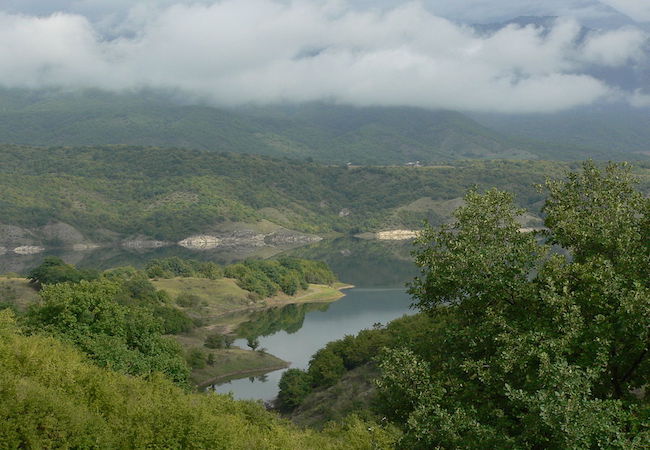Clashes in Nagorno Karabakh result in 30 deaths

At least 30 Armenian and Azeri servicemen were killed by renewed hostilities along the Line of Contact between Armenian and Azerbaijani troops in the Nagorno Karabakh region. The heavy fighting erupted in the early hours of April 2.
The escalation is unprecedented since the formal ceasefire between the sides was signed in a Russian-brokered ceasefire agreement in May 1994. The conflict dates back to 1988 when ethnic Armenians in Nagorno Karabakh autonomous region of Azerbaijan petitioned to secede from Azerbaijan proper and unite with Armenia but were denied the motion by the authorities of Azerbaijan as it would violate the constitutions of Azerbaijan and USSR of which both Armenia and Azerbaijan were constituent parts. Armed clashes ensued, escalating into a full-fledged war in 1992 when the two Soviet republics became independent. Moscow intervened in 1994 to impose a ceasefire – at the time when Armenian forces have made the most territorial gains. Despite the de-facto control over the territory by Armenian army, Nagorno Karabakh is recognized by the international community as part of Azerbaijan.
The ceasefire held for over two decades but sporadic violations of the agreement were commonplace. Intensity of skirmishes grew over the past 10 years as the public calls to end the conflict were not met. The hostilities that took place today are much different from clashes a decade ago since Armenia and Azerbaijan graduated from exchanges of Kalashkinov and machine-gun fire to the use of artillery, tanks and rocket launchers. Both sides beefed up their militaries over the years and have shifted some part of its military necessities to domestic production. Armenia as Russia’s closest ally in the region has been receiving subsidized arms deals and is part of the Moscow-run Collective Security Treaty Organization (CSTO). Azerbaijan has relied on its own financing and continued to build up its military hardware thanks to its oil revenues.
Each side blamed the other for the escalation. The Azerbaijani side confirmed 12 deaths, including two servicemen who died during the shoot-down of Azerbaijani Mi-24 attack helicopter; but also claims Azeri army units destroyed 6 Armenian tanks and 15 artillery pieces, and killed as many as 100 Armenian soldiers during the battle. In addition, the Defense Ministry of Azerbaijan issued a statement on the capture of Seysulan village and several commanding heights around Talysh village, both located on the Line of Contact.
The Armenian side confirmed 18 deaths but also claims it had killed 200 Azeri soldiers, an allegation that was not corroborated by the other side. As many as 35 Armenian servicemen were injured during the fight, according to the Armenian President Serzh Sargsyan who held a national security council meeting on Saturday. The Armenian leader blamed Azerbaijan for violating the ceasefire on such a scale since the agreement was signed in 1994.
The escalation took place at the time when both President Sargsyan of Armenia and President Aliyev of Azerbaijan were returning home from Washington where they were attending Nuclear Security Summit and separately held several meetings with administration officials, including Vice President Joe Biden and Secretary of State John Kerry. In his statement from March 30, Secretary Kerry commended Azerbaijan for its support to the United States in the energy security and counter-terrorism, and re-affirmed Washington’s support for territorial integrity of Azerbaijan.
The Russian President Vladimir Putin called on both parties to show restraint. U.S. Secretary of State John Kerry issued a statement saying that the United States “condemns in the strongest terms the large scale ceasefire violations” along the Line of Contact. “We urge the sides to show restraint, avoid further escalation, and strictly adhere to the ceasefire,” Kerry said. He called on both sides to enter into “immediate negotiations” on a comprehensive settlement of the conflict under the auspices of the Organization for Security and Cooperation in Europe. Both Russia and the United States, along with France, are co-chairs of OSCE Minsk Group tasked with mediating the peace talks. In the years passed, Minsk Group has not produced a viable proposal which would lead to a lasting settlement.




